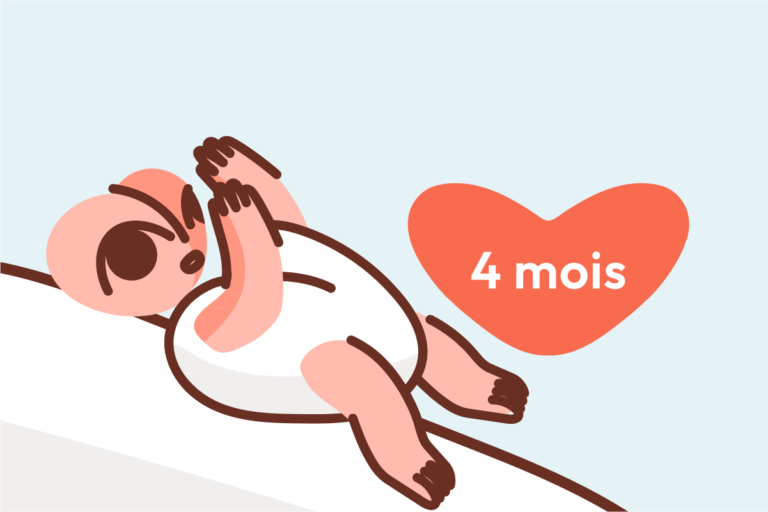The Asymmetrical Tonic Neck Reflex may sound like a term reserved for specialized medical textbooks, but it’s remarkably relevant to everyday life with a newborn. Imagine observing your baby lying peacefully, then suddenly extending one arm and leg each time their head turns—almost like a tiny fencer en garde. This unexpected pattern may prompt you to wonder, “Is this normal? Should I worry?” You’re not alone in these concerns. From questions about primitive reflexes and postural alignments to curiosity about how this fleeting phenomenon shapes essential skills such as hand-eye coordination, many parents seek concrete, science-backed answers. Let’s explore together the origins of this reflex, why its presence (and timely disappearance) matters, how it’s assessed, what it can mean if retained, and most importantly, actionable steps parents can take—from supportive daily activities to when and how to seek professional guidance.
What Is the Asymmetrical Tonic Neck Reflex?
The Asymmetrical Tonic Neck Reflex (ATNR) stands out as one of the earliest milestones of neurological maturity in infants. Often simply observed as the classic “fencing” posture, ATNR emerges before birth, around the 18th week of gestation. Picture this: when a baby’s head turns to one side, the arm and leg on that side extend while the opposite limbs flex. This automatic reaction, driven by neural pathways in the brainstem and a connected network of proprioceptors (cells responsible for body position awareness), provides much more than a curious pose—it facilitates early developmental leaps.
As your baby grows, the ATNR forms the backbone for foundational tasks: orienting the head to the environment, stimulating early visual tracking (following objects with the eyes), encouraging the first attempts at reaching and grasping, and helping differentiate left from right. Typically, this reflex fades by 5 to 7 months of age. What if it lingers? This leads us to the heart of why recognizing and understanding ATNR is so valuable.
Why Does the Asymmetrical Tonic Neck Reflex Exist?
The Role in Hand-Eye Coordination and Early Movement
Why does nature equip babies with such automatic responses? The Asymmetrical Tonic Neck Reflex doesn’t just look dramatic—it actually provides a scaffold for building hand-eye coordination. When your baby turns their head, the simultaneous extension and flexion of limbs prompt them to notice both sides of their body. Through repeated movements, infants begin mapping spatial boundaries and learning to direct their gaze and hands in harmony—a vital skill for later milestones such as rolling, crawling, and, eventually, more complex activities like catching a ball or drawing a circle.
Further, ATNR enhances bilateral integration—the ability to use both sides of the body separately and together. This sets the stage for crossing the midline (moving parts of the body from one side to the other), which, believe it or not, is a major step towards fluid movement, balanced posture, and even reading left to right on a page.
Interplay With Other Primitive Reflexes
ATNR doesn’t work in isolation. It operates alongside other primitive reflexes such as the Symmetrical Tonic Neck Reflex (STNR) and the Tonic Labyrinthine Reflex (TLR). The interplay among these provides a constantly shifting framework that helps babies discover—and test—the relationships between head motions, body alignment, and stability.
Neurological Pathways: The Science Behind ATNR
Brainstem Control and Sensory Input
The ATNR is orchestrated by the brainstem, a region governing basic life functions and the earliest forms of reflexive movement. It’s the “conductor” coordinating signals from vestibular systems (which detect changes in head position and movement) and proprioceptors. The result: a seamless movement that, while primitive, is brilliant in its timing and function.
Vestibular Integration and Its Implications
The vestibular system—think of it as your child’s internal GPS for balance and orientation—is tightly linked to the ATNR. Each time your baby’s head moves, this system kicks into gear, enabling efficient alignment for feeding, visual tracking, and eventually achieving strong, flexible posture. Problems in this synergy can, over time, lead to issues with core stability and balance.
A Timeline: From Onset to Integration
Emergence and Peak Expression
The Asymmetrical Tonic Neck Reflex is present from birth, most noticeable between 1 and 4 months. It often peaks as your baby starts to actively move their head and interact with the world.
Typical Integration Period
By 5 to 7 months, the ATNR should gradually integrate, making way for voluntary, purposeful movements. This window is vital. As voluntary movements refine, reflexes step into the background, quietly supporting postural control. The disappearance of ATNR signals readiness for milestones like sitting, crawling, and early standing.
What About Premature or At-Risk Babies?
Premature infants may display a stronger, longer-lasting ATNR, reflecting the immaturity of their neurological systems. Those facing perinatal complications—including birth trauma, low birth weight, or emergency cesareans—might have delayed integration. It’s not always a cause for alarm, but ongoing symptoms warrant attention.
Assessing and Observing the Reflex
Clinical Testing
Pediatricians and therapists test the ATNR by gently rotating a baby’s head to each side while the baby lies on their back. Key indicators: Does the arm and leg extend on the side toward which the head is turned, and do the opposite limbs flex? The response can be graded from minimal to pronounced or persistent, sometimes using standardized motor assessment tools.
At-Home Signs for Parents
Spotting ATNR outside the clinic is possible: difficulties with reaching across the midline, asymmetrical movement when rolling or sitting, and a head-turn-triggered extension or flexion pattern that seems to linger. Some parents observe their baby strongly favoring one side, or struggling to coordinate both hands.
Role in Developmental Screening
Detection of a persistent or strong ATNR is routinely included in neurological checks for infants—especially when other movement or sensorimotor integration delays are suspected.
When ATNR Persists: Symptoms and Risks
Effects on Movement and Posture
A retained Asymmetrical Tonic Neck Reflex can manifest in a multitude of ways:
- Ongoing trouble crossing the body’s midline, making bilateral tasks (like clapping or buttoning) difficult.
- Poor postural stability, resulting in slumping, leaning, or difficulties maintaining a straight sitting position.
- Lack of clear hand dominance, leading to switching hands during activities or delays in developing skilled handwriting.
Learning and Behavioral Impacts
Persistent ATNR often appears in children facing academic challenges, especially with reading and writing. Why? Midline crossing is crucial for coordinating eye movements, tracking words on a page, and orienting text correctly—key foundations for literacy. Some children may swap letters, struggle to follow lines of text, or avoid seated tasks that require precise visual-motor control.
Frustration, low self-esteem, or withdrawal during motor or group play can emerge if a child perceives themselves as less coordinated, highlighting the ripple effects far beyond physical movement.
Links With Neurodevelopmental Disorders
Children with autism spectrum disorder (ASD), attention-deficit/hyperactivity disorder (ADHD), or specific learning disabilities might display a higher incidence of retained primitive reflexes like ATNR. While not a cause, the overlay can complicate sensorimotor development, amplifying daily challenges.
Causes and Environmental Factors
Perinatal and Birth-Related Influences
Factors like complicated deliveries, restricted movement (as with prolonged swaddling), or insufficient tummy time can increase the likelihood of persistent ATNR. Limited early movement opportunities—think car seats and swings used for hours—can slow natural sensorimotor integration.
Environmental Approaches
Fortunately, the antidote to many risk factors is remarkably attainable: safe, supervised tummy play, opportunities for free movement, and limiting time in restrictive devices help create a fertile ground for healthy reflex integration.
Supporting ATNR Integration at Home and Beyond
Home Strategies for Parents
Here are practical ideas to foster Asymmetrical Tonic Neck Reflex integration:
- Ample tummy time: Let your baby lift, turn, and explore with head and limbs freely.
- Play to encourage separate head and trunk movements, such as gently turning the head while keeping the body still.
- Cross-body games and simple ball activities prompt bilateral coordination and train the body to dissociate head turns from limb extension.
- Offer toys that require both hands or midline crossing: stacking cups, large puzzles, safe mirrors.
Keep sessions playful and non-pressured. Tiny movements, repeated often, gently pave the way for progress.
Professional Support: When to Seek Help
If strong or persistent ATNR patterns are evident beyond 6-7 months—especially when paired with delayed gross or fine motor milestones—connecting with a pediatric occupational therapist or physical therapist can bring personalized insights and targeted support. These professionals design activities tailored to your child’s needs, focusing on sensorimotor integration, core muscle development, and gradual building of voluntary movement skills.
Consistency Across Environments
Progress accelerates when caregivers, therapists, and educators coordinate approaches. Strategies introduced by therapists can be reinforced through daily routines at home, in playgroups, or in the classroom environment, transforming individual gains into long-lasting confidence.
Research Updates and Perspectives
Scientific consensus confirms the link between retained ATNR and movement or learning delays; however, the most effective interventions continue to spark debate. Most clinical experts endorse a proactive approach—identifying and addressing retained reflexes early, balancing realistic expectations about the pace of change. As new research unfolds, parents can feel reassured: early support and movement-rich experiences offer a strong foundation.
Key Takeaways
- The Asymmetrical Tonic Neck Reflex is a normal, healthy component of early neurological development, typically integrating by 7 months of age.
- This reflex underpins foundational skills—hand-eye coordination, midline crossing, body awareness—that support movement, posture, and later academic achievement.
- Persistent ATNR, especially following premature birth or limited early movement, may impact coordination, balance, or learning. Recognizing the signs empowers you to act early.
- Practical home routines—generous tummy time, cross-body activities, playful stretching—encourage natural reflex integration.
- Collaboration with pediatric therapists offers highly effective, tailored solutions for persistent challenges.
- Remember: dedicated resources and professionals are available to support you. Explore the Heloa app for free health questionnaires and personalized guidance for your child’s development.
Parenting is a journey filled with questions and discoveries—each reflex, including the Asymmetrical Tonic Neck Reflex, marks a step on the road to growth and confidence, for your child and for you.
Questions Parents Ask
Can adults have a retained Asymmetrical Tonic Neck Reflex?
While the Asymmetrical Tonic Neck Reflex is meant to integrate by about 6 months of age, in rare instances, some elements can persist into later childhood or even adulthood. In adults, a retained ATNR may show up as challenges with coordinated movement, posture, or tasks that require crossing the body’s midline—such as handwriting or certain sports. It’s important to note that if an adult experiences these difficulties, it isn’t a cause for worry but rather an invitation to seek professional support. Therapists can suggest strategies and exercises to help improve coordination and daily comfort at any age.
What happens if the Asymmetrical Tonic Neck Reflex persists beyond childhood?
If the ATNR remains active well past the first year of life, it can sometimes impact motor skills, posture, and even learning abilities. Children might experience challenges with activities like writing, sports, or tasks that require both sides of the body to work together. Some may find it harder to stay focused or coordinate their eye movements when reading. Rassurez-vous, many supportive interventions exist. Pediatric specialists and therapists can offer gentle, playful exercises to help the nervous system mature and encourage smoother movement and learning. Remember, every child develops at their own pace, and there are always encouraging ways forward.
Further reading:









